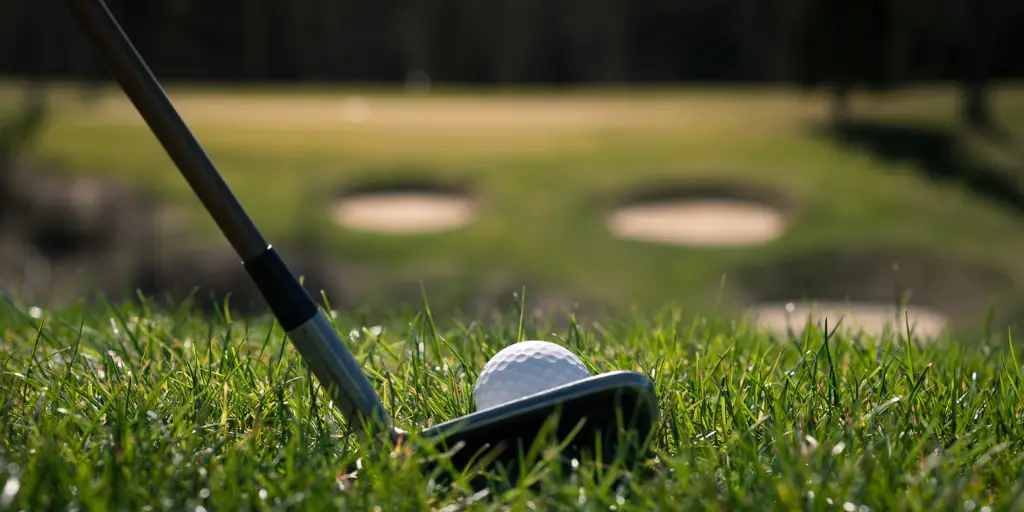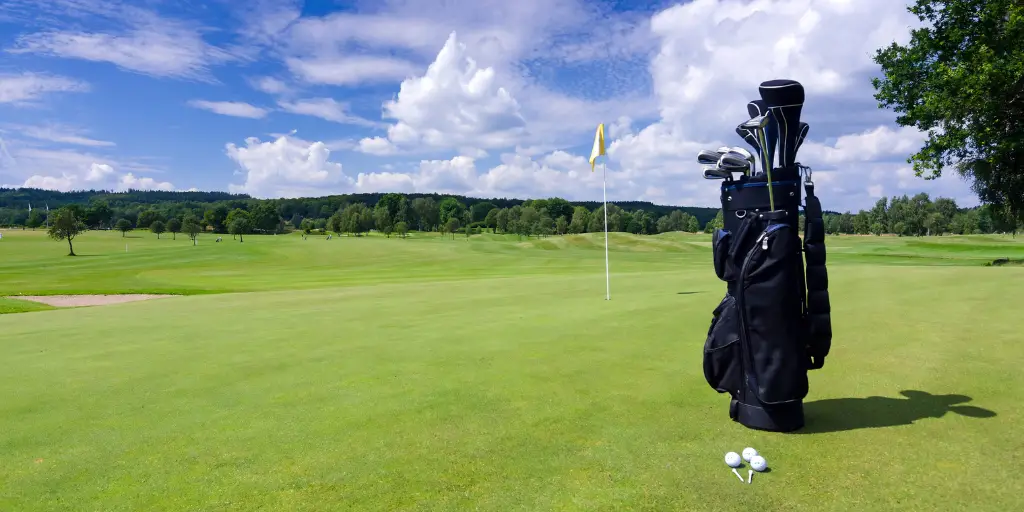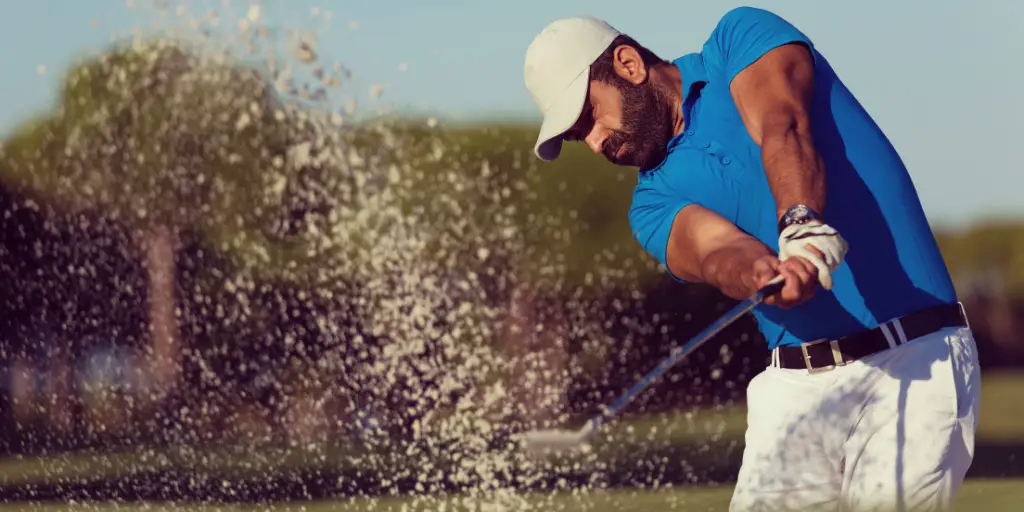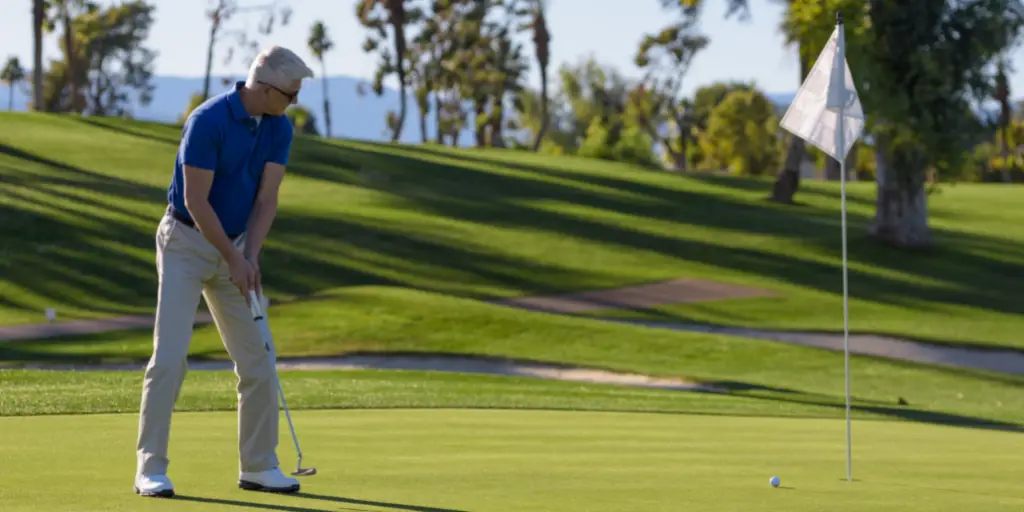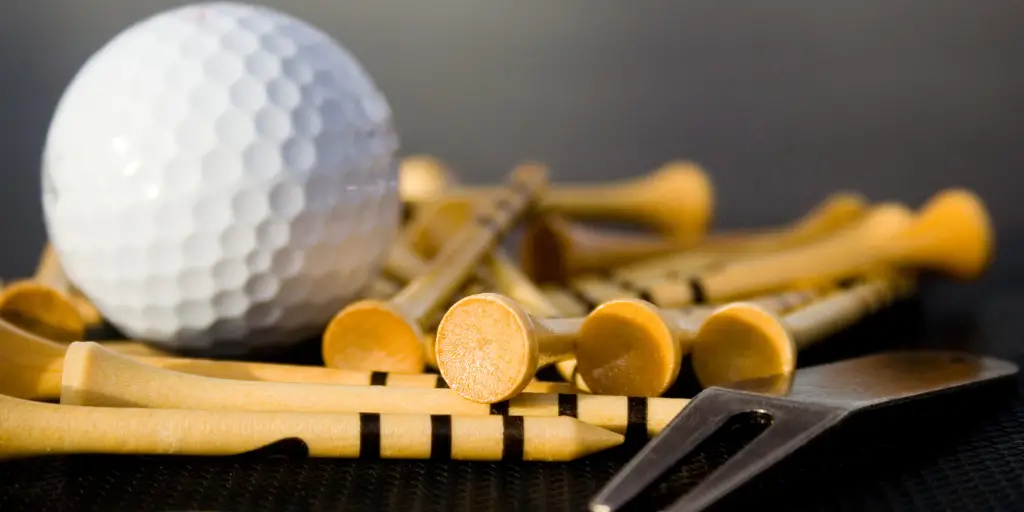Your short irons are composed of your higher lofted irons prior to reaching your PW. Generally speaking, you can break irons up into long (2, 3, 4), mid (5 and 6) and short (7, 8, 9) or some derivation of those groupings.
In golf, you progressively narrow your focus/target as you get closer to the green. Your goal with a driver is to land on the fairway. When you move up to your long irons or fairway woods, usually you are just trying to land on the green. With your short irons, you want to be close enough to the hole that you have a legitimate shot at a 1-putt.
Short irons are physically shorter and higher lofted than any clubs other than wedges so they are slightly easier to hit.
However, there are some tips and instructions that you should follow if you really want to learn how to hit short irons.
By reading the rest of this tutorial our hope is that your next trip to the golf course will be even more successful from 100 to 150 yards from the hole than ever because you learned how to hit your short irons.
Step By Step Instruction
1. Check Your Equipment
If you are a beginner, you still want to find clubs with more forgiveness, bigger sweet spots, added distance, and probably a little offset as well. Oftentimes beginners use borrowed clubs or off-the-rack irons and never learn how to hit with a golf club that suits their game.
We would encourage golfers to check your 8 and 9 iron and make sure they are setup well for your swing and overall game. Check out this article to get some of our suggestions for irons for beginners.
At the same time, make sure you are using golf balls that will accentuate your irons. There are some really good options out there no matter your budget that will help insure that your good shots are good and your bad shots are not as bad.
Stay away from the x-outs and the reclaimed balls and find something that will help your game.
2. Find Your Target and Consider Your Shot Shape
Your short irons will still have some shape to them. You can still draw, hook, fade, or slice a short iron as easily as any other club, so it is important to get a sense of what your normal swing produces. Again, consistency is anything but consistent when you are just starting out, but you can play the percentages and figure out what your average swing does.
With short irons, your target has gotten smaller. While you are probably not ready to start hitting your short irons to a specific place on the green, you are ready to start at least aiming at the pin. Now that you have a more specific and reachable target, play whatever your shot shape is and aim to the other side of the target and go for it.
3. Setup
Your short irons will be almost centered in your stance but back a little. Not as far back as your wedges, which are sometimes played off of your back foot, but you want to be able to hit down and get under the ball for a high ball flight and soft landing.
Your feet should be right at shoulder width apart and you should start with your hands right over the ball. Your stance and swing with your short irons actually promotes balance and athleticism and they can be some of the funnest clubs to hit.
4. Grip Pressure
Your grip pressure is actually more important as you move to your shorter clubs. The “grip and rip it” mentality is gone and you are trying to aim and get close to a target. Your hands have to be even softer and the tension that a tight grip causes is even more detrimental to these shots. Hold the club firm but not tight and make sure you have a good and natural feel of the grip.
5. Takeaway
Your takeaway should be the same as the rest of your irons. Your swing with long irons will be flatter and more inside-out while with short irons will be steeper with a higher attack angle.
Your takeaway is important because you want your hands and arms to start in a straight line to get them in the right position to make your turn. Many players have a tendency to move their hands in front of the club at take away while others try to move the hands back in an effort to “help the ball up.”
The key is to start neutral and to make your move with little hand and wrist action.
6. Make a Full Turn
With your short irons, you are still making a full turn so that your club shaft is parallel to the ground at the top. If you notice that you are losing some accuracy or you are over swinging, you can always move to a ¾ turn to test it out, but in general, the more consistency you can have with your irons the better.
7. Down Swing
The down swing is when many golfers lose their patience. There is that moment when you picture the perfect shot making the perfect sound and flying at the perfect trajectory for the pin. It is at that moment you try to make a spectacular shot rather than a golf shot.
Stay calm in your back swing. As a beginner you should never swing any club at 100% of your strength, but maintain an even 80-85%. Remember, solid contact is way more important than a hard swing and that should be your motto for every club.
This is a video of Nick Faldo talking about the transition to your downswing:
8. Think ¾ Swing
We mentioned earlier about a ¾ swing, and that is an option for these irons as well. Remember with short irons we are looking for accuracy and control above everything else, and a shorter and softer swing promotes those 2 things.
On top of that, it is vital for your future in golf to learn a ¾ swing for your short irons and wedges. When your target is more defined, there will be some yardages that are more difficult for you to hit.
For instance, if you are 120 yards out and you hit your 9-iron 130 yards and your PW 110 yards consistently, it may be better to hit a ¾ 8-iron. This type of shot is very common and very important for you to have in your arsenal.
9. Maintain Your Balance and Hold Your Finish
Have you ever noticed how balance is important in every sport and athletic endeavor. When your balance is off, nothing else really works. In fact, an off-balance strike at a 100% of your power will not travel as far or as straight as when you swing at 75% but maintain balance throughout your stroke.
Keep your balance, work on your balance, and at the end of your shot, hold your backswing to show everyone that you were in complete control of your swing from beginning to end.
Check out this video from Chris Ryan Golf for a great beginner’s tutorial called “How To Hit Short Irons”
Hitting Short Irons
How To Read Your Divot Pattern
One of the best ways to improve your short iron play is to analyze your divots. Here are a few things that you can learn when reading and analyzing your divots:
-
- Your swing path. If you are swinging inside-out, your divot will face to the right of the target. If you have a straight swing path it will point directly at the target, and if you have in outside-in swing path it will face to the left of your target. Swing path will help you learn more about alignment, the shape of your shot, and how well you are setting up to aim at your target.
- The downward angle of your swing. The depth of your divot will tell you a lot about your angle of attack. The deeper your divot, the more down you came on the ball, which is good to an extent. For the most part you want a pretty shallow divot that begins right after ball placement so that you know you made good contact.
- Consistency. One of the first and easiest things to notice when analyzing your divots is the consistency of your swing. If you swing is consistent, your divots will be as well.
Compressing Your Short Irons
Another mistake many golfers make is that they try to hit their short irons too high. When you think about it, the higher you hit a shot, the farther the ball has to travel before arriving at its destination. The farther the ball has to travel, the more chances there are for something to go wrong.
Compressing your short irons means to take some of the loft out of the club but arranging your body and the club in such a way that the loft angle is lessened or “compressed.” This is a great way to use your short irons without feeling like you have to sky them or swing up at the ball to get more height.
You can compress your short irons either by keeping your weight more forward during your swing or by moving your hands ahead of the club face or you could do a combination of both. Compressing your short irons allows you to have the hitability of your shorter irons but with a lower trajectory and usually a little more spin.
Here is a good video describing the biggest short iron mistakes players make:
Final Thoughts On How To Hit Short Irons
Short irons are vital to good scoring. Getting your approach shots closer to the hole will turn bogeys into pars, pars into birdies, and snowmen (8’s) into a thing of the past.
These clubs are easier to hit than most of what we have discussed so far, but there are some ways to improve your short iron game if you read the tutorial above.
If you have a favorite short iron club or shot, tell us about it in the comments. If you have any other advice or want to tell us what helped your swing the most, please let us know by commenting, posting videos, and putting up pictures of your favorite short iron and how well you hit it.

